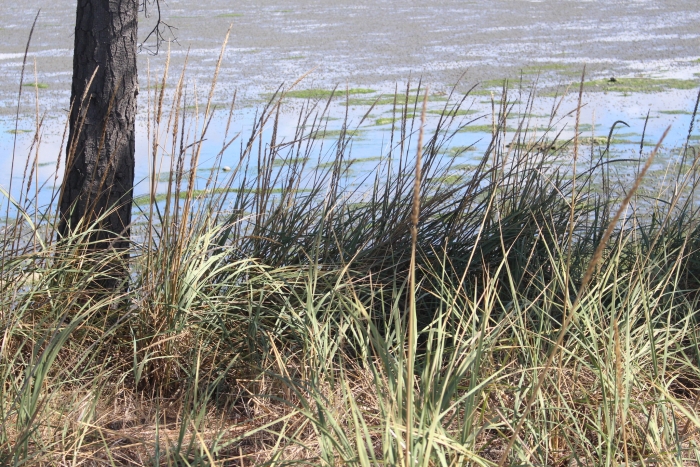Mammoth Wild Rye
(Leymus racemosus)
Mammoth Wild Rye (Leymus racemosus)
/
/

Joe Potter Butler
CC BY 4.0









































Estimated Native Range
Summary
Mammoth Wild Rye is valued for its low maintenance requirements and its use in soil stabilization, particularly on slopes and in areas prone to erosion. It is also beneficial in agricultural systems for its role in reducing nitrogen levels through biological nitrification inhibition (BNI). This grass is suitable for naturalistic plantings, as a ground cover in open spaces, and for creating a bold texture in the garden. It thrives in full sun and requires well-drained soils, tolerating both low and medium water conditions. While generally disease-free, it can become invasive in some regions, so gardeners should monitor its spread.CC BY-SA 4.0
Plant Description
- Plant Type: Grass
- Height: 3-4 feet
- Width: 6-9 feet
- Growth Rate: Moderate
- Flower Color: N/A
- Flowering Season: Summer
- Leaf Retention: Evergreen
Growth Requirements
- Sun: Full Sun
- Water: Low, Medium
- Drainage: Fast
Common Uses
Border Plant, Butterfly Garden, Deer Resistant, Drought Tolerant, Edible*Disclaimer: Easyscape's listed plant edibility is for informational use. Always verify the safety and proper identification of any plant before consumption., Erosion Control, Low Maintenance, Potted Plant, Rabbit Resistant, Rock Garden, Salt Tolerant
Natural Habitat
Temperate grasslands and dunes
Other Names
Common Names: Bredbladig Strandråg, Volga Wildrye, Mammoth Wildrye, Da Lai Cao
Scientific Names: , Leymus racemosus, Elymus racemosus, Leymus racemosus subsp. sabulosus, Elymus giganteus, Elymus sabulosus, Leymus sabulosus, Leymus racemosus subsp. crassinervius, Elymus mexicanus, Leymus giganteus
GBIF Accepted Name: Leymus racemosus (Lam.) Tzvelev